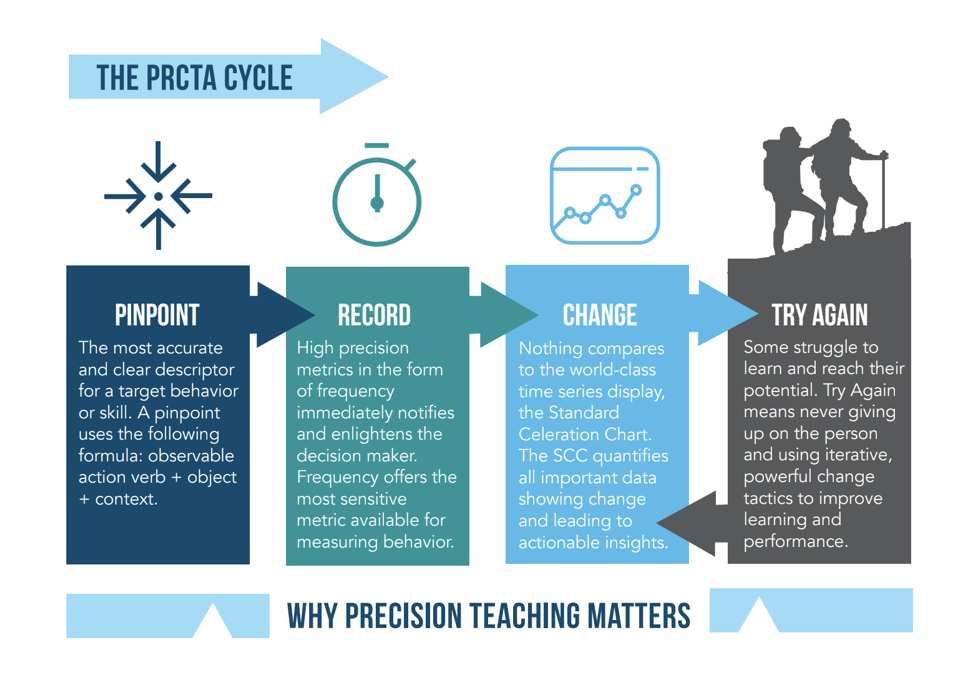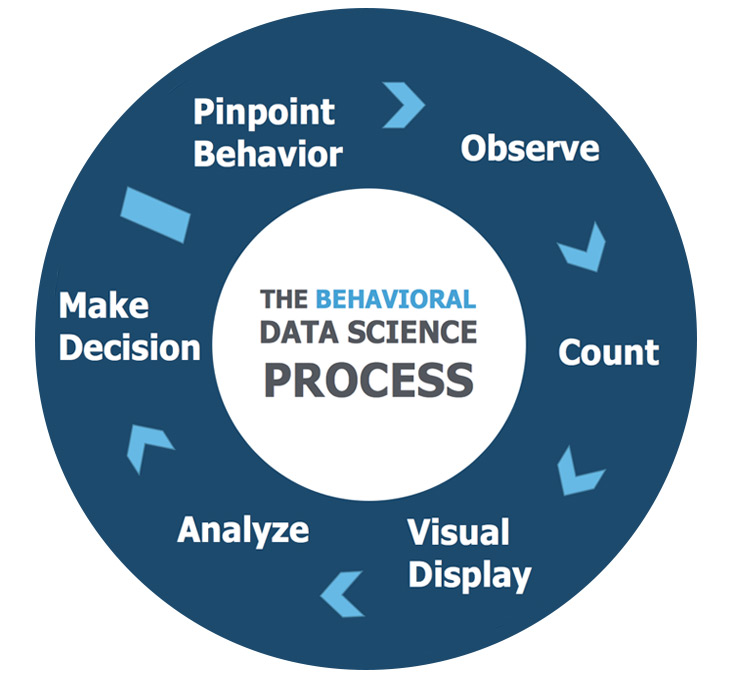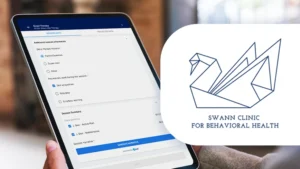By CentralReach “Celeration Ninja” Amy L. Evans, M.Ed., BCBA
In the same way that many people in the field of Applied Behavior Analysis (ABA) are committed to becoming behavior analysts after their first “big win” with a learner, most Precision Teaching (PT) practitioners have a “never going back” moment after achieving an outcome with a learner they previously thought was not possible.
For me, my “hooked on ABA” moment was when a young learner with autism started speaking in complete sentences. The same day he mastered that program, he took his mom’s hand, led her around pointing out family photos, and explained why he had been crying in each of them. My “hooked on Precision Teaching” moment was after I was able to elevate a 3rd grade math student up to grade level in less than 30 instructional hours. The client later told me that math was her new favorite subject, and that I was the “only tutor that actually helped.” After witnessing firsthand the breakthroughs that occurred as a result of behavior analytic intervention, I was hooked on the science. Once I produced measurable outcomes with a small stack of Standard Celeration Charts, I found myself fascinated with the effectiveness of precision measurement within ABA.
Now, I teach behavior analysts about Precision Teaching and get to hear stories of how it makes a huge difference in the lives of their clients. But as you may know, it takes time before these pivotal moments can occur — where everything comes together. The first step to getting there is to understand what Precision Teaching is, what it is not, and how it can transform your work with clients.
Defining Precision Teaching
Here’s the definition of Precision Teaching:
A system for precisely defining and continuously measuring dimensional features of behavior, and graphing and analyzing behavioral data on the Standard Celeration Chart (SCC) to make timely and effective data-based decisions to improve behavior (Evans, 2018).
PT is a System
Precision Teaching is not a program, a curriculum, or even a way of teaching; it is a system. This is why it can be used with any behavior change initiative, from teaching a learner diagnosed with autism to communicate, to training athletes and surgeons. This is also why it may be misunderstood, as those who have seen it in action do not always differentiate between the curriculum or activities they observe and the systematic process behind it.
The easiest-to-remember description of Precision Teaching is the cycle of Pinpoint, Record, Change, and Try Again (PRCTA) from The Precision Teaching Book (Kubina & Yurich, 2012).
The Precision Teaching team at CentralReach has recently tested representing PT as a “behavioral data science”, a term coined by Dr. Rick Kubina, BCBA-D. In this in-depth framework, the cycle includes six steps that create this process, showcased below:
The most important thing to understand here is that, like other systems, there are interconnected steps, and all of these must be deployed in order to consider what you do “Precision Teaching.”
Critical Elements
The critical elements represent those aspects of the Precision Teaching system that must be in place in order to confirm Precision Teaching implementation.
- Pinpointing
Precision Teaching defines behavior in a very specific way, using metrics called “pinpoints.” While behavioral objectives and operational definitions were created to help us clarify what a behavior looks like, how it will be measured, and under what conditions we might observe it, taking the extra step to create pinpoints can improve reliability in measurement, fidelity in treatment, and efficiency in learning.
- Continuous Observation
Precision Teaching takes measurement seriously and puts a great deal of time and thought into optimizing a measurement system to produce accurate, actionable data. To do this well, striking a balance between completeness (capturing all behavior) and accuracy is key. Continuous observation of behavior, even in short observation periods, produces more accurate data than discontinuous methods. That said, a Precision Teacher should prioritize continuous observation methods that strive for completeness when feasible, but narrow observation periods if necessary. - Dimensional Measurement
Measurable dimensions of behavior include count and/or time. A Precision Teaching practitioner counts and times behavior, often selecting frequency/rate (count per time) as a measure but sometimes choosing count, latency, or duration. To ensure that these are true measures of learner behavior and not simply an artifact of the behavior of the interventionist, a Precision Teacher opts for free-operant arrangements for teaching and observing behavior whenever possible. - Standard Celeration Chart
A Precision Teaching practitioner uses the Standard Celeration Chart (keyword: uses). The Standard Celeration Chart is a standardized visual display, with a ratio scale on the vertical axes and a calendar-based horizontal axis, that includes all elements necessary for effective analysis. Behavior analysts use this tool to display behavioral data, document environmental changes, and analyze progress toward meaningful outcomes. This magnificent tool provides both visual and quantitative analyses of behavioral phenomena and their relationship to environmental manipulations. Empowered with this tool, Precision Teachers make decisions quickly and often, which in turn produces efficient behavior change.
Guiding Principles
Implementing this system involves immense focus on measurement and data, but it is important to reflect on the purpose of Precision Teaching. If you dig a little deeper into the literature on PT or spend some time with Precision Teaching practitioners, you will find that the “why” behind our obsession with measurement and data-based decision making is 100% about producing superior learning outcomes for our clients.
There are a few principles in Precision Teaching that guide programming considerations, interactions with learners, and decision making. The biggest one that I think supersedes the rest is that “The Learner Knows Best” (Lindsley, 1990b). By collecting precise data as often as possible, we are allowed the flexibility to individualize teaching tactics quickly and effectively. Even when implementing the most evidence-based interventions, each learner is unique, and the Standard Celeration Chart helps us follow the learner to find what works for them.
A happy learner is one who is always challenged to improve but never coerced, never given more than they can handle, and never blamed. Striving to find that “sweet spot” to produce happy learners stems from a combination of applied science and caring for our clients. The Precision Teaching system allows for strong adherence to the core values of ethical, effective behavior analysts and is a strong driver of superior outcomes.
Hungry for more Precision Teaching content?
Watch the CentralReach webinar recording: Debunking the Myths of Precision Teaching. Dr. Rick Kubina and Amy Evans, with special guest host Kerri Milyko, as they discuss some of the intricacies of Precision Teaching as well as debunk common myths!
About the Author
Amy L. Evans, M.Ed., BCBA is the Lead Celeration Ninja at CentralReach LLC. Amy has been a practitioner of Precision Teaching and Applied Behavior Analysis since 2008, and a Board Certified Behavior Analyst since 2014. Amy earned her undergraduate degree from the University of Nevada, Reno and a Masters in Special Education from the Pennsylvania State University. Amy has worked in private learning centers, public school classrooms, home-based intervention and homeschool settings, combining the principles of Behavior Analysis, Precision Measurement, and Direct Instruction to solve educational and behavioral challenges for students from 4 to 18 years old, with and without learning or developmental disabilities. Amy’s current work at CentralReach includes designing and implementing training programs for autism providers who are looking to accelerate behavior change and learning outcomes with precise measurement, fluency-based instruction, and data-based decision making.
References
Evans, A. (2018, July). A case for embracing data science. Invited presentation given at The Convergence of Human Training, Animal Training, and Technology, Seattle, WA.
Evans, A. (2018, November). A Precise Description of Precision Teaching. Paper presented in Gist, C. & Evans, A. Why PT is an evidence-based practice, and other answers for your boss and colleagues. Symposium at the 31st Annual Conference of the Standard Celeration Society, Seattle, WA.
Kubina, R. M. (2014). The big heart: using science + caring to improve education (and the world) . Blog available at https://www.chartlytics.com/blog/the-big-heart.
Kubina, R. M., Yurich, K. K. L. (2012). The precision teaching book. Lemont, PA: Greatness Achieved Publishing Company.
Lindsley, O. R. (1996). The four free-operant freedoms. The Behavior analyst, 19(2), 199-210.
Patterson, K., & McDowell, C. (2009). Using precision teaching strategies to promote selfmanagement of inner behaviours and measuring effects on the symptoms of depression. European Journal of Behavior Analysis, 10, 283-295.
Lindsley, O. R. (1990b). Precision teaching: By teachers for children. Teaching Exceptional Children, 22(3), 10-15









